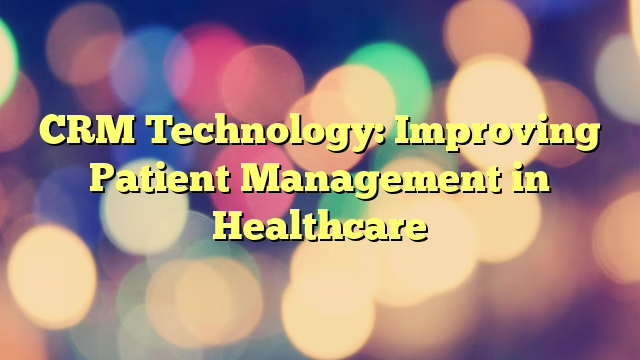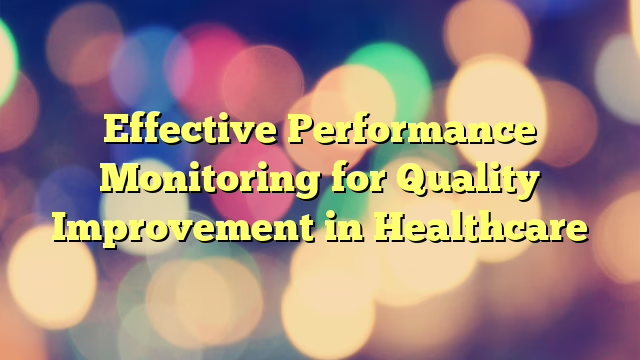Earwax Buildup: A Common Cause of Hearing Problems

Last Updated on 27/10/2025 by Admin
Exploring the Importance of Earwax and Its Key Functions
What Is Earwax and Why Is It Important?
Earwax, scientifically referred to as cerumen, is a naturally occurring substance produced by glands in the ear canal. This yellowish, waxy material is essential for maintaining ear health, performing both protective and cleansing roles. Its primary function is to trap foreign particles such as dust, dirt, and microorganisms, thus preventing them from reaching the sensitive eardrum. In this way, earwax serves as a biological barrier that shields the ear from potential infections and other health complications.
Interestingly, the composition of earwax varies from person to person, shaped by factors such as genetic background, environmental influences, and individual lifestyle choices. For example, some cultures may produce drier earwax due to specific environmental conditions, while others may have a wetter consistency. This variation not only highlights individual physiological differences but also reflects cultural practices regarding ear cleaning habits and techniques.
Moreover, earwax is not merely an inconvenience; it is a vital component of ear health, providing necessary lubrication and sustaining an optimal environment within the ear canal. This natural lubricant helps prevent dryness and irritation, enhancing overall comfort. By understanding the essential functions of earwax, individuals can appreciate its protective qualities rather than merely viewing it as a substance that needs to be eliminated.
The Essential Role of Earwax in Promoting Ear Health
Earwax plays a multifaceted role in preserving ear health. Beyond its protective qualities, it significantly contributes to the overall well-being of the ear canal. One of the crucial functions of earwax is its ability to keep the ear canal adequately lubricated. This moisture is vital for preventing the skin inside the ear from becoming dry and itchy, conditions that can lead to discomfort and irritation.
Additionally, earwax possesses antibacterial properties. The various chemicals found in earwax can effectively inhibit bacterial growth, thus reducing the risk of ear infections. In environments where exposure to pathogens is high, earwax serves as the first line of defense, ensuring that the ear remains free from unwanted microorganisms. This protective mechanism is especially valuable in regions with high levels of pollutants or allergens that can irritate the ear.
Furthermore, earwax assists in maintaining a balanced pH level within the ear canal, which is crucial for optimal ear health. A balanced pH level deters the growth of harmful fungi and bacteria that thrive in overly acidic or alkaline environments. Therefore, keeping earwax levels healthy can significantly impact the prevention of various ear-related issues.
How Does the Body Naturally Expel Earwax?
The human ear has an impressive ability to self-clean, primarily through natural processes that facilitate the expulsion of earwax. The unique structure of the ear canal, combined with actions like chewing and talking, plays a pivotal role in this self-cleaning mechanism. When the jaw moves, it creates vibrations that help push earwax towards the outer ear, where it eventually dries up and falls out or gets washed away during bathing.
Additionally, the skin within the ear canal continuously regenerates and migrates outward, carrying earwax with it. This natural exfoliation process is essential for maintaining ear hygiene, as it prevents excessive accumulation. However, various factors can disrupt this natural expulsion, leading to potential complications. For example, excessive use of earplugs, hearing aids, or frequent cleaning attempts can hinder the normal movement of earwax, resulting in buildup.
Understanding how earwax is naturally expelled underscores the importance of allowing the body to function without unnecessary interference. Striking a balance in ear hygiene practices is crucial to ensure that the natural self-cleaning process is not impeded, thereby promoting optimal ear health.
Professional Insights on the Consequences of Earwax Buildup and Hearing Impairment
What Factors Contribute to Excessive Earwax Buildup?
Excessive earwax buildup can arise from a variety of factors that disrupt the natural balance of earwax production and expulsion. One of the primary causes is the overproduction of earwax, which can occur due to genetic predisposition or environmental influences. In some individuals, genetic factors may impact the volume and consistency of earwax produced, leading to a higher likelihood of accumulation.
Narrow ear canals also play a significant role in earwax buildup. Individuals with anatomically narrower canals may find that earwax does not migrate outward effectively, increasing the risk of blockages. This issue is particularly prevalent among populations residing in areas with high dust or pollution levels, where earwax must work harder to trap debris. Additionally, the frequent use of hearing aids and earplugs can exacerbate this issue by physically obstructing the natural expulsion process.
Here is a bullet list of common causes of excessive earwax buildup:
- Overproduction of earwax due to genetic factors
- Narrow or abnormally shaped ear canals
- Frequent use of hearing aids or earplugs
- Environmental factors such as dust or pollution
- Skin conditions affecting the ear canal
- Age-related changes in earwax consistency
- Improper ear cleaning techniques
- Frequent swimming or exposure of the ears to water
Recognizing these contributing factors is essential for understanding why some individuals experience more severe earwax buildup than others. Addressing these causes through proper ear hygiene and awareness can help mitigate the likelihood of excessive buildup and its associated complications.
How Does Earwax Buildup Impact Hearing Ability?
When earwax accumulates in the ear canal, it can lead to significant hearing issues. The most common consequence of earwax buildup is blockage, which can result in muffled hearing or even temporary hearing loss. This occurs because the buildup of wax creates a barrier that prevents sound waves from effectively reaching the eardrum, resulting in a perception of diminished sound quality.
In addition to muffled hearing, individuals may also experience discomfort and a sensation of fullness in the ear as the buildup progresses. This feeling can be distracting and may lead to increased awareness of external sounds, creating a cycle of discomfort. It is crucial to proactively address earwax buildup to avoid these auditory challenges and restore normal hearing function.
To manage earwax buildup effectively, individuals can take several actionable steps:
- Perform regular ear hygiene by cleaning the outer ear with a damp cloth.
- Avoid inserting objects into the ear canal, including cotton swabs.
- Consider using ear drops to soften earwax, facilitating its natural exit from the ear.
- Stay hydrated, as adequate hydration can influence earwax consistency.
- Schedule regular check-ups with an ear specialist to monitor ear health.
By implementing these proactive measures, individuals can significantly reduce the risk of earwax-related hearing issues and maintain optimal auditory health.
Can Earwax Buildup Lead to Other Health Complications?
In addition to causing hearing problems, excessive earwax buildup can lead to a range of other health complications. One common issue is earache, which can arise when the accumulated wax exerts pressure against the ear canal walls or the eardrum. This discomfort is often accompanied by an irritating sensation that can interfere with daily activities.
Another potential consequence of earwax buildup is tinnitus, characterized by ringing or buzzing sounds in the ears. The presence of excess wax can amplify these sounds, making them more prominent and distressing. In severe cases, prolonged earwax accumulation can lead to infections or even damage to the eardrum, resulting in permanent hearing loss.
Recognizing the importance of early diagnosis and treatment is crucial for preventing complications associated with earwax buildup. Individuals should remain vigilant for signs of discomfort, such as persistent ear pain, changes in hearing, or unusual sounds, as these may indicate that medical intervention is necessary.
Timely management of earwax buildup can alleviate symptoms and prevent further health issues, underscoring the significance of maintaining good ear hygiene.
Identifying Symptoms and Diagnosing Earwax-Related Hearing Issues
What Are the Common Symptoms of Earwax Buildup?
Identifying the symptoms of earwax buildup early can lead to more effective treatment and management. Common symptoms include hearing loss, typically characterized by a gradual decline in sound perception or a feeling of muffled hearing. This often prompts individuals to seek assistance as they notice changes in their auditory experience.
In addition to hearing loss, many individuals report experiencing earaches or discomfort, which may be accompanied by a sensation of fullness in the ear. This pressure can be bothersome and disconcerting, prompting people to explore remedies for relief. Another notable symptom is tinnitus, where individuals perceive ringing, buzzing, or hissing sounds in their ears, which can be particularly distressing when coupled with other symptoms.
Recognizing these signs early is vital, as it allows for timely intervention and treatment. If you experience any of these symptoms, it’s essential to monitor them closely to determine whether they persist or worsen over time. Prompt attention to earwax buildup can not only alleviate discomfort but also safeguard hearing health.
How Is Earwax Buildup Diagnosed by Professionals?
Diagnosing earwax buildup is typically a straightforward process that involves a physical examination by a qualified healthcare professional. During this examination, the healthcare provider will utilize an otoscope, a specialized instrument equipped with a light and magnifying lens, to gain a clear view of the ear canal and eardrum. This allows the provider to assess the presence and extent of earwax accumulation.
If earwax is visible and confirmed to be causing symptoms, the diagnosis of earwax buildup is clear-cut. In some instances, healthcare providers may also conduct additional tests to rule out other potential ear conditions that could mimic symptoms of earwax buildup. This thorough examination ensures that the correct diagnosis is made, allowing for appropriate treatment and management.
By understanding the diagnostic process, individuals can navigate any concerns about earwax accumulation with confidence. Recognizing the signs and seeking timely professional assessment can lead to effective resolutions and improved ear health.
What Are the Key Differences Between Earwax Buildup and Other Ear Conditions?
Earwax buildup can often be mistaken for other ear conditions, such as infections or foreign bodies lodged within the ear canal. The symptoms may overlap, leading to uncertainty about the underlying issue. However, there are key distinctions that can help differentiate earwax buildup from other ear-related problems.
For instance, ear infections may present with additional symptoms such as fever, drainage from the ear, and severe pain, while earwax buildup typically manifests as muffled hearing, discomfort, and a sensation of fullness. Unlike infections, where the presence of pus or fluid may be evident, earwax buildup is characterized by a blockage without additional signs of infection.
To accurately differentiate between these conditions, a professional examination is necessary. Healthcare providers are equipped to discern between earwax accumulation and other underlying ear issues, ensuring that individuals receive the correct treatment and care. By seeking professional evaluation, individuals can prevent unnecessary discomfort and complications.
When Is It Necessary to Seek Medical Attention for Earwax Buildup?
It is crucial to understand when to seek medical attention for earwax buildup to avoid complications. Individuals should consult a healthcare professional if symptoms persist or worsen over time, particularly if home remedies do not provide relief. Immediate attention is warranted if there is a sudden onset of severe pain, discharge from the ear, or rapid changes in hearing ability.
Consulting a healthcare professional is especially important for individuals with a history of ear-related issues or those who wear hearing aids, as they may be more susceptible to complications from earwax buildup. Ignoring symptoms or self-treating without proper knowledge can lead to further issues, including infections or damage to ear structures.
In summary, being proactive about ear health is essential. Seeking medical attention promptly can lead to effective treatment and prevent the escalation of problems associated with earwax buildup.
Exploring Treatment Options for Earwax Buildup
What Are Effective At-Home Remedies for Earwax Removal?
For minor cases of earwax buildup, several effective at-home remedies can facilitate the natural removal of earwax. These treatments primarily aim to soften the wax, making it easier for it to exit the ear canal. A common approach is the use of ear drops, available at pharmacies or through healthcare providers. These drops often contain ingredients like hydrogen peroxide or olive oil that help soften the earwax.
Another method involves the gentle irrigation of the ear canal with warm water. However, this should be undertaken with caution to avoid potential injury. It is essential to use a bulb syringe or irrigation kit specifically designed for ear cleaning and to follow the manufacturer’s instructions carefully. Additionally, maintaining proper ear hygiene by regularly cleaning the outer ear with a damp cloth can help prevent buildup.
Here are some safe at-home methods for earwax removal:
- Utilize over-the-counter ear drops to soften wax.
- Gently irrigate the ear with warm water using a bulb syringe.
- Apply mineral oil or olive oil to help soften earwax.
- Regularly clean the outer ear with a damp cloth.
- Avoid using cotton swabs inside the ear canal.
- Maintain a dry ear environment to prevent excess moisture.
- Use a towel to catch any wax that may come out during cleaning.
- Stay hydrated, as proper hydration can influence earwax consistency.
While these remedies can be effective, caution is warranted to avoid causing injury to the ear canal. If symptoms persist despite these treatments, seeking professional help is recommended.
When Should You Seek Professional Assistance for Earwax Removal?
There are situations where at-home remedies may not suffice for managing earwax buildup, necessitating professional intervention. If home treatments fail to alleviate symptoms or if individuals experience persistent pain, discharge from the ear, or significant hearing loss, it is essential to consult an ear specialist.
Healthcare professionals possess the expertise and tools necessary for safe earwax removal. They can employ various techniques to effectively remove excess wax, ensuring that the ear canal remains unharmed. Techniques such as microsuction, which involves using a small suction device to remove wax, are commonly used in clinical settings for their efficacy and safety.
Additionally, individuals who regularly use hearing aids or earplugs should consider scheduling routine check-ups with an ear specialist, as these devices can contribute to wax accumulation. Professional evaluations allow for timely interventions that prevent the escalation of earwax-related complications.
In summary, seeking professional help is crucial when at-home remedies are ineffective or concerning symptoms arise. Consulting with an expert ensures safe and effective management of earwax buildup, promoting overall ear health.
What Are the Risks Associated with Improper Earwax Removal?
Improper earwax removal can pose significant risks, potentially leading to further complications. One of the most common mistakes is using cotton swabs or other objects to clean the ear canal. This practice can inadvertently push earwax deeper into the canal, leading to increased blockage and discomfort. Additionally, it may cause irritation or injury to the sensitive skin lining the ear, resulting in pain or even bleeding.
Improper removal can also lead to infections. If the ear canal is not cleaned properly, bacteria can thrive in the environment created by trapped wax, increasing the risk of infections that can damage ear structures and lead to more severe health issues. In some cases, pushing wax deeper can even cause damage to the eardrum, resulting in permanent hearing loss.
Given these risks, it is crucial to avoid aggressive cleaning methods and to prioritize safe hygiene practices. When in doubt, seeking professional help for earwax removal is always the best course of action. By understanding the potential consequences of improper earwax removal, individuals can take proactive measures to protect their ear health.
How Can You Prevent Earwax Buildup?
Preventing earwax buildup involves adopting sound ear hygiene practices that promote natural ear maintenance. Regularly cleaning the outer ear with a damp cloth is essential. This simple act helps to remove any excess wax that may have migrated to the outer ear while avoiding the insertion of objects into the ear canal, which can disrupt the natural movement of wax.
Moreover, it is crucial to avoid using cotton swabs or any other objects inside the ear canal, as mentioned previously. These items can push earwax deeper or cause injury. Instead, individuals should allow the body to perform its natural self-cleaning functions. Maintaining a dry ear environment can also help prevent excessive wax buildup, particularly for those who frequently swim or engage in water activities.
Here are some practical tips to prevent earwax buildup:
- Clean the outer ear regularly with a damp cloth.
- Avoid inserting objects into the ear canal, including cotton swabs.
- Maintain a dry ear environment, especially after swimming.
- Consider using ear drops to soften wax if you have a history of buildup.
- Schedule regular check-ups with a healthcare professional.
- Limit exposure to environmental irritants that can increase wax production.
- Stay hydrated to maintain optimal earwax consistency.
- Use earplugs designed for swimming if necessary.
By implementing these preventive measures, individuals can significantly reduce the likelihood of earwax buildup and maintain optimal ear health over time.
What Professional Techniques Are Used for Earwax Removal?
Ear specialists utilize a variety of techniques for professional earwax removal, ensuring that the process is both safe and effective. One of the most common methods is microsuction, which involves using a small suction device to gently remove excess wax from the ear canal. This technique is favored for its precision and ability to minimize discomfort.
Another technique is ear irrigation, which involves gently flushing the ear canal with warm water or saline solution. This method can effectively dislodge and wash away earwax, provided it is performed by a qualified professional who can ensure that no complications arise during the process. Manual removal is also an option, wherein healthcare providers use specialized tools to physically extract the wax from the ear canal.
Each method has its own benefits and considerations. For example, while microsuction is less likely to cause discomfort, irrigation may be more effective for larger blockages. Ultimately, the choice of technique will depend on the individual’s specific circumstances, including their comfort level and the extent of the earwax accumulation.
Consulting with an ear specialist ensures that individuals receive the most appropriate treatment for their earwax buildup based on their unique needs and conditions. This professional guidance is essential in maintaining healthy ear canals and optimal hearing function.
Strategies for Preventing Earwax Buildup
How Can You Effectively Prevent Earwax Buildup?
Preventing earwax buildup is an ongoing process that requires attention to personal hygiene and awareness of ear health. Regular cleaning of the outer ear is crucial, as it helps to prevent excess wax from migrating into the ear canal. Using a damp cloth to gently wipe the outer ear can effectively remove any visible wax without risking injury to the ear canal.
Avoiding the insertion of objects into the ear canal is equally important. Many individuals mistakenly believe that cotton swabs are effective for ear cleaning, but these tools can push wax deeper and create blockages. Instead, individuals should rely on the body’s natural self-cleaning mechanisms, which effectively manage earwax levels when left undisturbed.
Additionally, individuals should consider using ear drops to soften earwax, particularly if they have a history of buildup. This proactive approach can help facilitate the natural expulsion of wax during regular activities. Overall, prioritizing proper ear hygiene and being mindful of ear health can significantly reduce the likelihood of excessive earwax accumulation.
Are There Lifestyle Factors That Influence Earwax Production?
Certain lifestyle factors can significantly impact earwax production and the likelihood of buildup. For instance, diet plays a role in overall health, including ear health. A balanced diet rich in vitamins and minerals supports bodily functions, including the production and consistency of earwax. Foods high in omega-3 fatty acids, antioxidants, and proper hydration can positively affect ear health.
Stress is another factor that can influence earwax production. High stress levels may lead to increased bodily secretions, including earwax. Addressing stress through mindfulness practices, exercise, and relaxation techniques can promote overall well-being and help manage earwax levels.
Furthermore, certain medications can influence earwax production. Antihistamines, for example, may dry out the body’s mucous membranes, potentially leading to changes in earwax consistency. Individuals should consult with healthcare professionals about any medications they are taking and their potential impacts on ear health.
By recognizing these lifestyle factors and making necessary adjustments, individuals can help maintain a healthy balance of earwax production and support their overall ear health.
What Impact Do Hearing Aids Have on Earwax Buildup?
Hearing aids can significantly influence earwax buildup, as they often create a physical barrier that can trap earwax within the ear canal. Individuals who wear hearing aids may find that the device obstructs the natural expulsion of earwax, leading to increased accumulation over time. This problem is particularly prevalent among users of in-the-ear hearing aids, which are situated directly within the ear canal and can exacerbate wax buildup.
To mitigate this issue, regular cleaning and maintenance of hearing aids are essential. Users should adhere to manufacturer guidelines for cleaning their devices and schedule routine check-ups with an audiologist to ensure proper fit and function. Furthermore, incorporating ear hygiene practices, such as using ear drops to soften wax, can help facilitate the natural expulsion of wax and reduce the likelihood of blockage.
By being proactive about ear hygiene and hearing aid maintenance, individuals can minimize the risk of earwax buildup while benefiting from the advantages that hearing aids provide in enhancing auditory function.
Research-Backed Benefits of Properly Managing Earwax Buildup
How Does Effective Earwax Management Enhance Quality of Life?
Effective management of earwax buildup plays a crucial role in improving overall quality of life. By preventing excessive buildup, individuals can avoid hearing loss and discomfort, which can significantly impact daily activities. Clear hearing is essential for effective communication, social interactions, and overall engagement in life.
Moreover, managing earwax can enhance overall ear health, reducing the risk of infections and other complications that may arise from untreated buildup. This proactive approach allows individuals to maintain optimal auditory function and enjoy the sounds of their environment without interruption. By investing in earwax management, individuals can experience a better quality of life, free from the limitations imposed by ear-related issues.
Expert analysis supports the idea that effective earwax management can lead to improved mental well-being. For instance, individuals who navigate their auditory environment without the burden of hearing loss often experience enhanced cognitive functioning, as they can remain actively engaged in conversations and social situations. Thus, a holistic approach to earwax management can yield profound benefits for overall well-being.
What Are the Long-Term Advantages of Regular Earwax Removal?
Regular earwax removal yields numerous long-term benefits that contribute to sustained ear health. First and foremost, maintaining appropriate earwax levels can prevent chronic hearing issues. Persistent excessive earwax buildup can lead to irreversible damage to the auditory system, whereas regular removal helps safeguard against such complications.
Additionally, effectively managing earwax reduces the risk of ear infections, which can arise from trapped wax creating an ideal environment for bacteria to thrive. By ensuring that the ear canal remains clear, individuals can avoid the discomfort and potential complications associated with infections, further promoting ear health.
Over time, effective earwax management fosters a healthier ear canal, allowing for optimal auditory function. Individuals can enjoy clearer hearing, improved communication abilities, and greater engagement in daily life. These long-term benefits underscore the significance of prioritizing earwax management as part of an overall approach to ear health.
Can Regular Earwax Management Facilitate Early Detection of Other Ear Conditions?
Regular check-ups for earwax management can indeed facilitate the early detection of other ear conditions. When individuals visit healthcare professionals for earwax removal, they receive a thorough examination of the ear canal and eardrum. This process allows for the identification of potential issues such as infections, perforations, or the presence of foreign bodies that may otherwise go unnoticed.
By addressing earwax buildup in a timely manner, individuals not only maintain optimal ear health but also gain the advantage of early intervention for any emerging issues. This proactive approach can lead to better outcomes, as early treatment often results in more favorable prognoses and can prevent more significant complications down the line.
Incorporating regular earwax management into health routines empowers individuals to take charge of their ear health, leading to improved overall well-being and a proactive stance against potential ear problems.
How Can Managing Earwax Buildup Enhance Cognitive Function?
Proper management of earwax buildup can significantly enhance cognitive function, primarily through its impact on hearing. Clear hearing is essential for effective communication, which plays a critical role in cognitive engagement and social interaction. Individuals who experience hearing loss due to earwax buildup may find themselves isolated or unable to participate fully in conversations, leading to cognitive decline over time.
Research indicates that untreated hearing loss can be associated with cognitive decline and an increased risk of dementia. By ensuring that earwax does not impede hearing ability, individuals can foster a more engaged cognitive state, as they are better equipped to interact with their environment and maintain meaningful social connections.
In summary, managing earwax buildup not only promotes auditory health but also nurtures cognitive function, encouraging a vibrant and active lifestyle. As individuals prioritize ear care, they can enjoy the cognitive benefits associated with clear hearing and remain connected to the world around them.
Frequently Asked Questions (FAQs)
What is earwax made from?
Earwax, or cerumen, comprises secretions from sebaceous glands, dead skin cells, and other debris. Its consistency can vary among individuals, influenced by genetics and environmental factors.
How often should I clean my ears?
It is generally recommended to clean the outer ear weekly with a damp cloth, but avoid inserting anything into the ear canal. The ears are self-cleaning, so excessive cleaning is unnecessary.
Can I remove earwax myself?
While some at-home methods can be effective, self-removal poses risks. It is best to consult a healthcare professional if you suspect significant buildup or experience symptoms.
Are there any over-the-counter products for earwax removal?
Yes, there are various over-the-counter ear drops designed to soften earwax, making it easier for the body to expel naturally. Always follow the instructions on the packaging.
What happens if earwax is not removed?
If left untreated, excessive earwax can lead to hearing loss, discomfort, earaches, and even infections. Regular monitoring and management are essential for ear health.
Can earwax buildup cause tinnitus?
Yes, earwax buildup can contribute to tinnitus, characterized by ringing or buzzing sounds in the ears, due to pressure against the ear structures.
Is it safe to use cotton swabs for ear cleaning?
Using cotton swabs for ear cleaning is not recommended, as it can push wax deeper and cause injury. It is best to avoid inserting anything into the ear canal.
How can I prevent earwax buildup?
Preventing earwax buildup involves maintaining proper ear hygiene, avoiding object insertion, using ear drops if necessary, and staying hydrated to support ear health.
When should I see a doctor about earwax buildup?
Consult a healthcare professional if you experience persistent symptoms like hearing loss, earache, or discharge. Immediate attention is needed if there are sudden changes in hearing.
Can earwax buildup affect my hearing aids?
Yes, earwax can accumulate around hearing aids, impacting their performance. Regular cleaning and professional check-ups are crucial for hearing aid users to manage earwax effectively.
Explore our world on X!
The post Earwax Buildup: A Common Cause of Hearing Problems appeared first on The Microsuction Ear Wax Removal Network.
The post Earwax Buildup: A Common Cause of Hearing Problems appeared first on Healthcare Marketing Service.
































